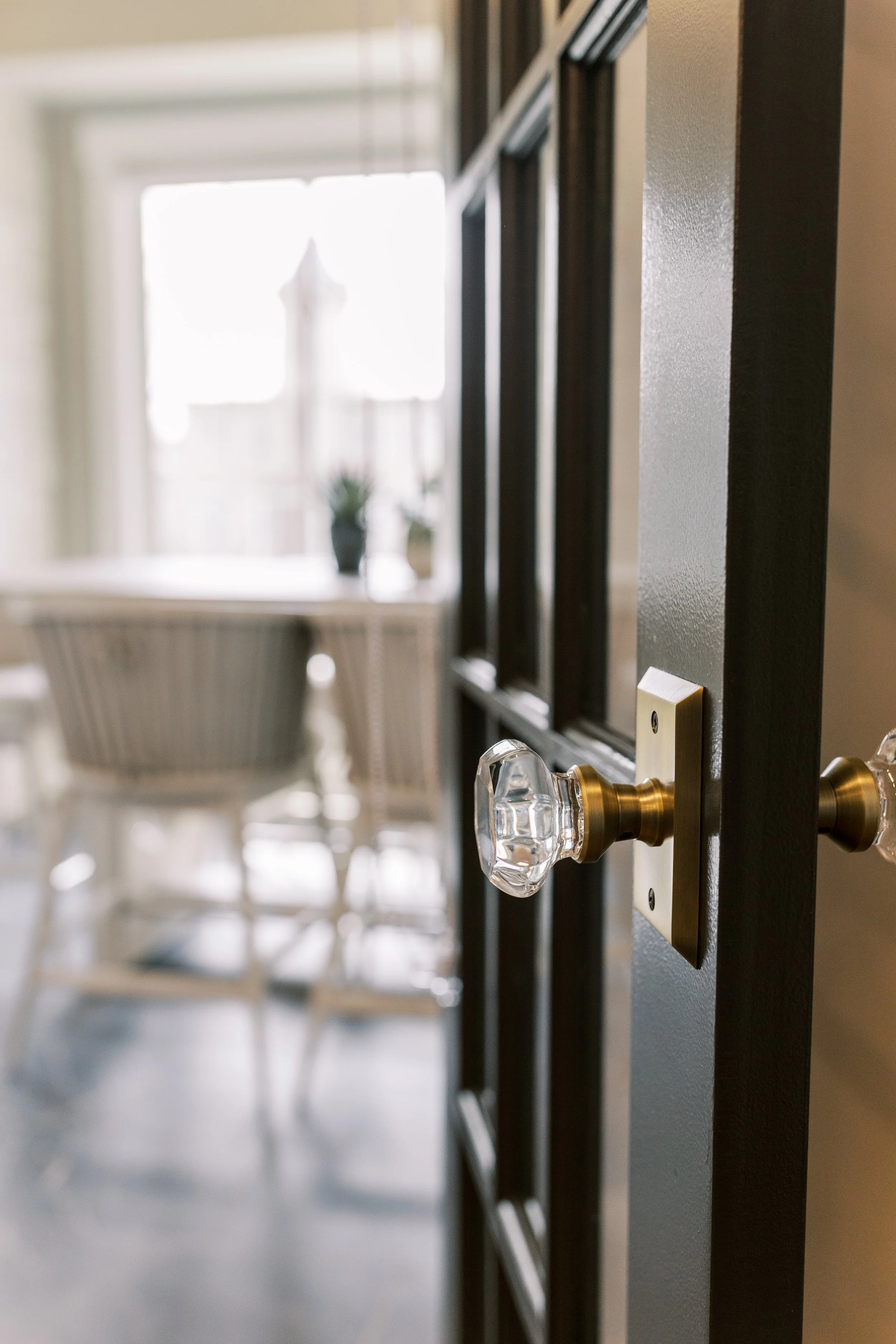Let’s Talk Sheen
Choosing the Right Finish, Room by Room
We get asked all the time: “What sheen should I use?”
It’s a fair question, because the answer depends on where it’s going, what the walls are doing, and how much life that room sees. We’ve got our go-to choices (you know we have opinions), and our painters definitely have theirs. Sometimes we’re on the same page, sometimes we learn something from each other, which is exactly how it should be.
Now, I’ve never really thought of myself as a history buff—but when it comes to design, I’ve learned there’s something surprisingly fun (and maybe even helpful) about understanding where certain choices began. Paint sheen might seem like just a technical detail, but it’s actually full of little nods to the past, and knowing those roots can make your current-day choices even more thoughtful.
In this journal, we’re breaking down the most-used sheens—where we like to use them, why, and what to watch out for. Whether you’re a flat finish fan or semi-gloss loyalist, you’ll walk away with a few design tips—and maybe a new favorite.
Flat / Matt Finish
Best for: Ceilings, low-traffic rooms, historic homes
Flat paint has no sheen at all, which means it absorbs light and hides imperfections beautifully. It gives a soft, velvety look that feels timeless. We often use flat finishes in older homes with plaster walls that carry a bit of character. It’s also perfect for ceilings or rooms where you want to create a soft, moody envelope, like a cozy library or a romantic guest room.
Design tip: For a high-impact, cocooned feel, try flat on both walls and ceiling in the same deep hue.
Eggshell Finish
Best for: Living rooms, dining rooms, hallways
Eggshell is the sweet spot. It has a slight sheen—just enough to be cleanable and light-reflective, without being too shiny. It’s our go-to for main living spaces where the walls see a bit of life but still want to look pulled together. From sunny family rooms to classic dining spaces, eggshell does the job with quiet confidence.
A little history: Did you know? Eggshell rose to popularity in the 20th century as homeowners shifted from formal Victorian interiors to more casual, livable spaces.
Satin Finish
Best for: Kitchens, bathrooms, laundry rooms, mudrooms
Satin is one step shinier and more durable than eggshell, which makes it perfect for places that get splashed, wiped, or generally worked a little harder. We often use it in kitchens and bathrooms where a little moisture resistance is a good thing. It’s also a favorite for hardworking spaces like mudrooms, laundry rooms, and utility hallways.
Design tip: Satin’s soft glow helps small or dimly lit rooms feel a bit brighter.
Semi-Gloss Finish
Best for: Trim, doors, cabinetry
Semi-gloss is where you start to get that polished, crisp look. We love it for baseboards, crown molding, and built-ins—it highlights the details and stands up to repeated cleaning. It also creates a beautiful contrast when paired with a flatter finish on the walls, adding dimension without overpowering the space.
Design Tip: Use the same color on walls and trim, but in two different sheens. It’s a subtle detail that feels sophisticated and intentional.
High Gloss Finish
Best for: Statement doors, ceilings, furniture, bold millwork
High gloss is all about drama. It reflects light like glass, making it perfect for a bold moment—but it’s not for the faint of heart. It shows every imperfection, so prep work is everything. We’ve used high gloss on jewel-toned cabinetry, on ceilings in moody libraries, and even on front doors that need to make a lasting first impression.
A little history: Lacquered finishes date back centuries—think Chinese antiques, French salons, and Art Deco interiors. When used thoughtfully, high gloss still feels fresh and fearless.
In the End…
Paint sheen isn’t just a technical detail—it’s part of the design language of a home. It affects light, mood, durability, and how the space actually feels. Choosing the right finish comes down to balancing beauty with function, and a little experience never hurts. We’ve seen what works (and what doesn’t), and we’re always happy to help clients land on the perfect combination. Got questions about your walls, trim, or cabinetry? Let’s talk paint. We’ve got thoughts—and a few favorites.



